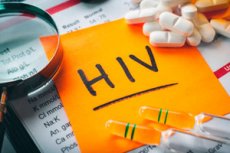New publications
New WHO recommendations: injectable lenacapavir for HIV prevention
Last reviewed: 15.07.2025

All iLive content is medically reviewed or fact checked to ensure as much factual accuracy as possible.
We have strict sourcing guidelines and only link to reputable media sites, academic research institutions and, whenever possible, medically peer reviewed studies. Note that the numbers in parentheses ([1], [2], etc.) are clickable links to these studies.
If you feel that any of our content is inaccurate, out-of-date, or otherwise questionable, please select it and press Ctrl + Enter.

WHO has issued new recommendations on the use of lenacapavir (LEN) as an additional HIV prevention measure.
Today, the World Health Organization (WHO) published new guidelines recommending the use of injectable lenacapavir (LEN) twice a year as an additional option for pre-exposure prophylaxis (PrEP) for HIV. This important policy decision has the potential to transform the global response to HIV. The recommendations were presented at the International AIDS Society’s 13th International Conference on HIV Science (IAS 2025) in Kigali, Rwanda.
Lenacapavir, the first PrEP drug in a twice-yearly injection, offers a highly effective, long-acting alternative to daily pills and other short-term options. With just two doses per year, LEN is a revolutionary step in protecting people at risk of HIV—especially those who have difficulty taking their daily medications, face stigma, or have limited access to care.
“While an HIV vaccine is not yet available, lenacapavir is the next best thing: a long-acting antiretroviral drug that studies have shown prevents almost all HIV infections in people at risk. WHO’s new recommendations, along with the recent FDA approval, are an important step toward expanding access to this powerful tool. WHO stands ready to work with countries and partners to ensure this innovation reaches communities as quickly and safely as possible,” said WHO Director-General Dr Tedros Adhanom Ghebreyesus.
An important point for HIV prevention
The new recommendations come at a critical time when HIV prevention efforts are stagnating, with 1.3 million new HIV infections expected in 2024. Key and priority populations, including sex workers, men who have sex with men, transgender people, people who inject drugs, prisoners, and children and adolescents, are disproportionately affected.
The WHO LEN recommendation signals a decisive step towards scaling up and diversifying HIV prevention efforts, giving people more control over their health and choices that fit their lifestyle.
Simplified testing: a major hurdle has been cleared
As part of these recommendations, WHO also recommends the use of rapid HIV testing to support the use of extended-release pre-exposure prophylaxis, including lenacapavir (LEN) and cabotegravir (CAB-LA). This simplified testing strategy removes a major barrier, allowing longer-term PrEP methods to be implemented in pharmacies, clinics, and via telemedicine.
Next Steps: A Call for Implementation
LEN joins other WHO-recommended PrEP options, including daily oral medications, injectable cabotegravir, and the dapivirine vaginal ring, as part of a growing arsenal of tools to end the HIV epidemic. While access to LEN outside of clinical trials remains limited, WHO is calling on governments, donors, and global health partners to begin implementing LEN into national comprehensive HIV prevention programmes, while collecting data on its uptake, adherence, and real-world impact.
Additional WHO recommendations for IAS 2025
For the first time, WHO treatment guidelines clearly recommend the use of extended-release injections of cabotegravir and rilpivirine (CAB/RPV) as an alternative option for switching to antiretroviral therapy (ART) for adults and adolescents who are fully virally suppressed on oral ART and do not have active hepatitis B infection. This approach will help people living with HIV who have difficulty adhering to oral therapy.
Updated recommendations on service integration include integrating HIV services with programmes to address noncommunicable diseases (such as hypertension and diabetes) and with mental health services for depression, anxiety and alcohol abuse. New recommendations on the management of asymptomatic STIs include screening for gonorrhoea and/or chlamydia among key and priority populations.
For people with HIV and mpox infection who have not previously received ART or have had long treatment interruptions, it is strongly recommended that ART be initiated as soon as possible. Early HIV testing is also recommended for people with suspected or confirmed mpox infection.
Call to action
“We have all the tools and knowledge to end AIDS as a public health threat,” said Dr Meg Docherty, Director of the Department of HIV, Viral Hepatitis and STIs at WHO. “We now need bold steps to implement these recommendations, based on equity and supported by communities.”
As of the end of 2024, an estimated 40.8 million people worldwide were living with HIV, with about 65% of them in the WHO African Region. In 2024, about 630,000 people died from HIV-related causes and another 1.3 million became infected, including 120,000 children.
As funding for HIV programmes declines, new and updated WHO guidelines offer practical, evidence-based strategies to sustain progress.
